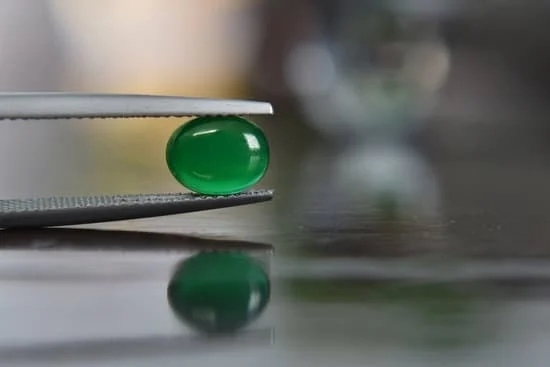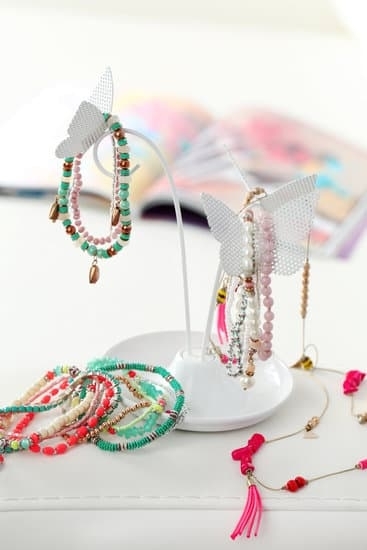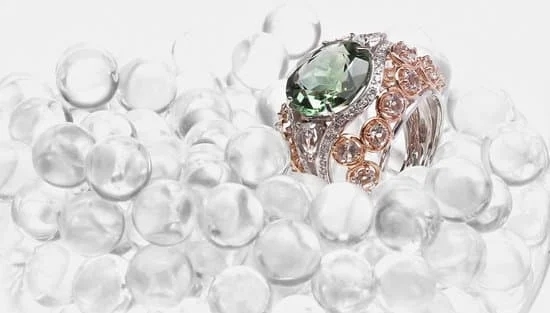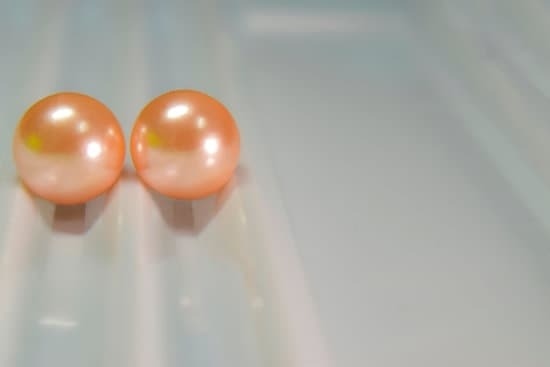Victorian Era commoners jewelry is arguably the most popular kind of jewelry used by the lower classes during the era. It was a time of social transformation and a rise in manufacturing practices and technology, which gave way to all kinds of new jewelry coming on the market. Commoners often could not afford the expensive pieces made with precious metals such as gold and silver, so they adapted their jewelry trends, creating some truly unique pieces.
The Victorian Era is viewed both positive and negative – people were living longer due to advances in medical care yet there was extreme poverty amongst many working-class individuals, especially during the industrial revolution. With money being tight for working class people, Jewelry served as an inexpensive form of self-expression.
In contrast to upper-class jewels crafted from precious metals like gold or platinum with diamonds or other gemstones embedded in them, commoners’ jewelry usually contained only imitation stones or plain glass beads. Generally speaking, it was likely made from cheaper materials such as brass or tin alloyed with other elements such as nickel or aluminum.
Although there were no specific rules for what constituted commoner’s jewellery in this period, certain types were more popular than others because they often better matched styles typically seen by wealthier members of society but at a fraction of the cost. Popular type included buckles and brooches, pendants and necklaces cameos and lockets, charms suspended from watch guards or chains, hair combs embedded with gems and earrings embellished with dangling trinkets or pearls.
Interestingly enough these items are now highly sought after by collectors who appreciate both their historic value and charming beauty influenced by classical motifs like Victorian architecture or distinct flora and fauna imagery During this time period metal plating techniques allowed for more ornate details in comparison to earlier periods which results in more intricate designs on brooches, locks bangles and earrings plus luxurious Eastern inspired shading engraved into soft accessories like lorgnettes charm guard pendants.
In conclusion – Victorian Era Commoners jewelry was composed of inexpensive materials such as Plain glass Beads alloyed with other Elements that still resulted in fashionable pieces that closely mirrored Wealthier Jewelry trends without requiring exuberant amounts of money outlay. As time has progressed these Imitation pieces have become increasingly prized collectibles appreciated both from afar & closely looked upon through their aesthetic character & Identity jewellery can evoke within its owner.
Structure and Popularity
Victorian era commoners jewelry was known for its elegance and style, as well as its affordability. Commoners of the time mostly purchased affordable, yet stylish pieces from traveling merchants, local markets, and artisan workshops. These pieces ranged from simple gold or silver lockets, to miniature paintings on ivory, to carved stone figurines.
For more wealthy individuals, more intricate pieces were available with better craftsmanship and made with precious materials such as rubies, diamonds, and pearls. The popularity of Victorian commoners jewelry was largely determined by the quantity of trinkets they had access to in their society at the time.
The economy of most major cities during the Victorian era was booming due to industrialization and new technologies being developed daily. As a result, prices of jewelry became much more reasonable compared to the past. Along with this economic boom also came a newfound sense of leisure time that allowed many people to indulge in hobbies like collecting jewelry.
During this time frame it was also more socially acceptable for women of all classes to wear jewelry; adding another layer as to why it was so popular among Victorians. After all, if one saw everyone else wearing something they wanted it too. Items such as pendants, brooches, necklaces and earrings were very popular choices among Victorians looking to make fashion statements or display their wealth while still staying within their budgets.
Additionally ,traveling merchants would often visit different cities and villages around Europe and Britain offering unique styles that quickly gained popularity amongst the locals; who were always looking for ways to set themselves apart through fashion trends. Whether it was wooden beads from Africa or personalized lockets from France – every item appealed differently depending on which country it originated from. Finally , people found solace in cards created by artisans who crafted individualized portraits using watercolor paints.
Since these pieces were truly one-of-a-kind items , customers trusted them implicitly knowing that no other person had anything like theirs. Therefore , Victorian Era commoners jewelry acquired its popularity primarily through its affordability , availability , comfortability , and uniqueness.
Materials and Craftsmanship
In the Victorian era, the majority of commoners across Europe used a simple and primitive form of jewelry crafted from traditional materials such as silver, bronze, and gold. Less affluent folk often had no access to luxury materials and were confined to what was available – usually silver or pewter as base metals.
These metals would then be shaped and set with semi-precious stones like malachite, lapis lazuli, quartz, or opal. While some pieces were designed to be purely ornamental for display purposes – such as cameo brooches or chunky necklaces – others had a more practical use with watch chains or pocket watches being popular items amongst men of all classes in Victorian society.
The craftsmanship behind the creation of this jewelry varied greatly depending on its purpose and its audience. Wealthier families may have been able to afford custom-made pieces made by highly skilled goldsmiths and silversmiths who specialized in complex techniques like chasing and embossing. This was extremely intricate work which used finely detailed tools to create motifs out of the metal itself – often replicating classical figures, scenes from mythology, or natural elements such as leaves or animals.
Similarly, religious figures such as crosses were incredibly popular within Victoria society at this time, especially among lower ranked classes who wore them in designated ‘outfits’ when attending church services – complete with matching hats and gloves. Many also put their own mark on their jewelry by engraving initials into rings or charms that hung from chains around their necks.
While there were limitations due to budgets when it came to jewelry for commoners during the Victorian era, craftsmanship played a key role in creating ornately detailed items – each employing its own unique level of skill according to that individual craftsman’s expertise.
Accessories
During the Victorian Era, commoners wore jewelry almost as much as those from upper classes. The majority of their accessories were usually rather inexpensive since their income was usually limited due to their socio-economic status. Despite the affordability factor, wearing such items had a strong symbolic value for most commoners since it reflected their social identity and enabled them to make a statement about who they were.
One very popular form of adornments that was extremely popular among this population was lockets. Concealed within these were photographs or locks of hair symbolising loved ones and making them into a precious keepsake. Wearing them around one’s neck was an obvious reminder of those cherished family members or friends in times when travelling could be long and arduous.
Besides lockets, rings and brooches with various messages were also treasured by many commoners during this period. When worn together with other pieces such as pins or earrings, it helped demonstrate how important the message engraved on each piece was to the individual.
Hair jewelry also found its way into the everyday lives of Victorian Era commoners and could not be overlooked when discussing accessorizing back then. Woven from human hair, these items served both decorative purposes as well as symbolizing romantic ties between close relatives and friends alike; especially useful for those who resided in far away areas and rarely got to visit one another in person.
Furthermore, rings featuring finger-printed images of a special someone became increasingly popular for Victorians near the end of that century.
Such pieces allowed one to literally “wear your heart on your sleeve” which resonated strongly with numerous people then facing difficulties with physical distance from loved ones over long stretches of time spent apart from one another.
Consequently, these trinkets offered some solace through helping create certain forms of tangible connection despite physical separation assumedly resulting in valuable memories still depicted today in various art forms or unspoken stories passed through generations within families documented throughout history and etched into minds until present day circumstances today.
Inspiration
The Victorian Era had a heavy influence on the jewelry designs of commoners in England and in many other parts of the world. While the elite typically wore more expensive, intricate jewelry that had been crafted by goldsmiths, the commoner’s jewelry was more limited in expense and craftsmanship yet still held its own unique expression of beauty. Iconic museums and artists from the era served as major contributors to Victorian era commoners’ jewelry designs.
Important museum collections were established during this time period which provided tangible resources for starting artisans who crafted such pieces of jewelry. For example, the South Kensington Museum (now known as The Victoria & Albert Museum) established in 1852 sought to increase public education about art and design primarily through decorative arts.
The museum’s collection included everyday items, including those used for personal adornment such as brooches, earrings, necklaces, etc., making it an invaluable source for apprentice craftsmen seeking inspiration from existing objects that could be recreated into something new with a different theme or set of materials.
Jean Desprès is considered one of the most prominent influences on commoner’s jewelry during this time period. He is known for incorporating traditional concepts, like amber beads popular throughout Europe at that time with his own contemporary design style. This approach embodied his motto,”A simple line can sometimes achieve remarkable things”.
His incorporation of Celtic patterns combined with classical modes made his pieces both timelessly stylish and deeply meaningful to the wearer while still being within their budget range. Additionally, certain religious groups drew inspiration from these pieces to reflect their belief systems; often times it was pendants featuring crucifixes or various Christian symbols worn close to one’s heart area as a sign of piety.
All in all, Jean Desprès’ influence on Victorian Era Jewlery Design could be seen across economic classes and cultures alike-believed to symbolize vintage charm with lasting appeal for generations to come.
Designs
The Victorian Era was a major turning point in design innovation, creativity and sophistication, particularly when it came to jewelry. Commoners took great pride in their fashion accessories and loved wearing pieces that represented wealth and power. During this period of time, jewelry designs were often lavish, intricate, and detailed with semi-precious stones.
One of the most popular designs during the Victorian Era for commoners’ jewelry was “gridding”. Gridding involved creating a symmetrical piece of jewelry with fringes or settings along the band. This style was popular among both male and female members of various social classes because it created an illusion of structure yet remained subtle enough to be fashionable on a daily basis.
A second top design used for commoners’ jewelry during this period was religious symbolism including crosses or crucifixes, which had become increasingly popular as Christianity became widespread in Europe during this era. This type of jewelry often included precious metals such as gold or silver with stones embedded in them to create intricate designs that represented faith and strength.
These symbols were religiously significant to many people during the Victorian Era, so they proudly displayed their faith by wearing elegant yet meaningful pieces of religious-inspired jewelry every day.
Another well-received style during this time period was locket pendants featuring images inside small cylindrical containers filled with glass panes. This type of jewelry was primarily worn by women who wanted to carry images of family members close to their hearts wherever they went-allowing them to remain connected even when circumstances led them apart for extended periods of time.
The majority of these lockets featured oval or circular shapes in the center with embellished designs made from metals like brass surrounding it-making it easy for wearers not only to show off their beloved family portraits but also their fashionable taste in jewelry as well.
Styles and Identifiable Trends
The Victorian era was a period of time from 1837-1901, during the rule of Queen Victoria of the United Kingdom. This time period encompasses a variety of styles and trends in different areas such as fashion, music and art, but jewelry was particularly popular among common people.
The jewelers whose craft was easily accessible to anyone at creditable prices produced vast assortments of unique pieces bearing identifiable trends rooted in the design language used by reigning monarchs. Many decided to adopt jewelry styles that would mimic or even rival those worn by nobility and aristocrats.
The most evident trend follows a similar color palette which uses muted shades with bright accents, typically found on rings, necklaces and pendants fashioned from gold or silver with details accented by glinting stones such as turquoise and lapis lazuli. Alongside this, filigree – an ornate yet delicate form of craftsmanship mostly used on earrings – began to rise in popularity among commoners because it added extra texture to the piece that otherwise couldn’t be achieved.
This allowed for some flair being added to everyday outfits when outfitted with absurdly ornate earrings for example, with rich gemstones also included for further radiance within the design itself.
Another prominent change in style that is often seen when identifying jewelry trends within the Victorian Era is an increase in neoclassical choices by craftsmen who prefer cleaner furnishes over traditional methods such as molding and soldering varying layers of metal together.
Jewelry makers started using shapes like hearts and stars more loosely while also creating profiles showcasing large curves, pointed protrusions to add a rigid touch and many other designs that looked far better than anything made before – all along keeping it lightweight yet durable enough to withstand daily wear-and-tear without tarnishing too quickly.
Such changes had caused an entire revolution within English high street markets where all sorts of pieces could now be crafted at once for pocket friendly prices, allowing for any wearer regardless their background feel part of society’s higher circles.
In conclusion, there are many identifiable trends present when it comes to classical jewelry crafted during the rule of Queen Victoria; from more daring Necklace choices featuring larger overall surface area in silver or gold along with faceted gems scattered across them followed quietly by warmer toned natural stone based bracelets.
Conclusion
When it comes to Victorian era jewelry, there is no disputing the fact that much of it has withstood the test of time. Jewelry from this era was incredibly popular amongst the general public and even today, many of its styles are still relevant and reflective in current trends.
In particular, commoners showcased an interesting aesthetic when it came to Victorian-era jewelry – one which is particularly noteworthy and provides insight into the broader cultural influences at play during this era.
One example of this can be seen in earrings. Although by no means a new accessory, Victorian earrings tended to feature intricate detailing compared to those earlier on in 19th-century Europe. Pearls, gemstones and even semiprecious stones were all incorporated into these designs – suggesting there was a desire among commoners for luxury items despite their socio-economic standings. This trend persevered long beyond the initial Victorians era, as evidenced by modern day statement earrings.
Similarly, rings were common during this era and are something which continues to dominate many contemporary jewelry collections. With designs centred on rose gold bands or opulent frames around significant gems like beads or diamonds, people seemed to enjoy expressing their personal values through what many consider an extension of themselves or their spiritual beliefs. These rings often featured delicate engravings or fine craftsmanship too – characteristics which continue to be found in many pieces today.
All in all, Victorian Era Commoners Jewelry holds great significance not only culturally but also aesthetically. It brought forth both subtle statement pieces and bold symbols of individuality that continues to shape modern jewelry trends today while still remaining true to vintage appeal. By capitalising on innovative techniques at play during this period such as mosaics and filigree work, we can see how it informed later generations’ sense of style as well as spark an appreciation for high quality materials.

Welcome to my jewelry blog! My name is Sarah and I am the owner of this blog.
I love making jewelry and sharing my creations with others.
So whether you’re someone who loves wearing jewelry yourself or simply enjoys learning about it, be sure to check out my blog for insightful posts on everything related to this exciting topic!






